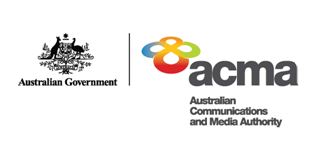Australia - Majority of households still to turn to digital free-to-air television
Wednesday, April 9th, 2008
Research released today by the Australian Communications and Media Authority indicates only just over two out of five Australian households – 42 per cent – are watching digital television over the airwaves
‘Take-up of digital free-to-air TV has risen steadily since its introduction in 2001, but significant numbers of the community have yet to make the switch from analog,’ said Chris Chapman, ACMA Chairman.
‘This research gives us an insight into the reasons for the adoption and non-adoption of digital television, which will help guide the Federal Government, ACMA and broadcasters to effectively manage the transition from analog to digital.’
ACMA’s research suggests that even when viewers of digital subscription television services are combined with those watching over the airwaves, only just over half of households – 54 per cent – are receiving digital free-to-air television services.
The research also indicates that digital capable TV sets now account for a quarter (25.7 per cent) of overall stock of televisions.
The findings are among the key results of the Digital television in Australian homes 2007 report, the third in a series of ACMA studies into household adoption of digital TV.
For the first time, differences in adoption rates by state and territory and between metropolitan and regional areas have been measured, including two case studies in Mildura and Broken Hill. The highest adoption rates were in Mildura (70.3 per cent) and Tasmania (64 per cent), and the lowest rates in South Australia (37.1 per cent) and Queensland (37.2 per cent).
‘While better picture quality continues to be the key reason for digital uptake nationally, access to extra channels and new content has led the unusually strong growth evident in areas such as Tasmania and Mildura,’ Mr Chapman said.
Despite the growth in digital take-up, over half of Australian households still need to make the switch to digital free-to-air television, and close to a quarter (24 per cent) of households remain not interested in adopting. Many in this core group indicated they were not interested in TV, while others saw no compelling need to change or were put off by cost.
National awareness of the future switch-off of the analog signal by 2013 was unchanged from 2006 at 67 per cent. The key survey results are available on ACMA’s website.
Key results
Digital terrestrial television broadcasting (DTTB) environment in 2007 – summary:
- DTTB household take-up has grown to 41.8 per cent, up from 13 per cent in 2005 and 29.6 per cent in 2006
- DTTB growth trend remains steady
- DTTB-capable sets now account for a quarter (25.7 per cent) of overall stock of televisions, up from 7.1 per cent in 2005 and 17.1 per cent in 2006
- Localised high adoption evident in Tasmania and Mildura
- Set-top boxes dominant and key to high adoption levels in Tasmania and Mildura.
DTTB hardware breakdown:
- TVs with set-top box – 66.6 per cent (STBs strong in high adoption areas of Mildura (81 per cent) and Tasmania (75 per cent) )
- Integrated TV set with an inbuilt decoder – 28.8 per cent
- Computer with a digital TV tuner – 4.6 per cent.
Latest News
- Netflix posts first quarter 2024 results and outlook
- Graham Media Group selects Bitmovin Playback
- Dialog, Axiata Group, Bharti Airtel agree on merger in Sri Lanka
- Yahoo brings identity solutions to CTV
- Plex has largest FAST line-up with 1,112 channels
- TV3 migrates from on-prem servers to AWS Cloud with Redge